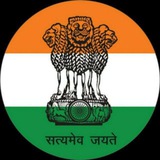tg-me.com/CSE_EXAM/38709
Last Update:
🔆 Schools of Indian Philosophy
✅During the later Vedic period, definite ideas and philosophies about the true nature of soul or Atman and the cosmic principle or Brahman who represented the ultimate reality were developed.
✅These Vedic philosophical concepts later on gave rise to various schools of philosophies called Shada Darshana.
✅They fall in the category of the orthodox system, as the final authority of the Vedas is recognised by all of them.
✅The orthodox schools of Indian philosophy are as follows:
▪️Samkhya system
✅ Propounded by Kapil Muni, this philosophy holds that reality is constituted of two principles- one female and the other male i.e., Prakriti and Purusha respectively.
✅ It tries to establish a relationship between Purusha and Prakriti to explain the creation of the universe.
▪️Yoga
✅The origin of yoga is found in the Yogasutra of Patanjali believed to have been written in the second century BC.
✅By purifying and controlling changes in the mental mechanism, yoga systematically brings about the release of purusha from prakriti.
✅Yogic techniques control the body, mind and sense organs.
✅Thus, this philosophy is also considered a means of achieving freedom or mukti.
▪️ Nyaya
✅Gautama is said to be the author of the Nyaya Sutras.
✅Nyaya is considered as a
technique of logical thinking.
✅The school holds that there are four valid means of knowledge:
1. perception (pratyaksha),
2. inference (anumana),
3. comparison (upamana), and
4. sound, or testimony
(shabda).
▪️Vaisheshika
✅Kanada wrote the basic text of Vaisheshika philosophy.
✅Vaisheshika system is
considered as the realistic and objective philosophy of the universe.
✅It believes that all objects of the universe are composed of five elements–earth, water, air, fire and ether.
✅Further, God is the guiding principle and the living beings are rewarded or punished according to the law of karma.
▪️Mimamsa
✅Mimamsa philosophy is basically the analysis of interpretation, application and the use of the text of the Samhita and Brahmana portions of the Vedas.
✅According to the philosophy,
Vedas are eternal and possess all knowledge, and religion means the fulfilment of duties prescribed by the Vedas.
▪️ Vedanta
✅Vedanta implies the philosophy of the Upanishad, the concluding portion of the Vedas.
✅It also believes that there is no distinction between the Brahman and the self.
✅Shankaracharya believes that the Brahman is existent, unchanging, the highest truth and the ultimate knowledge.
✅The knowledge of the Brahman is the essence of all things and the ultimate existence.
Apart from these orthodox schools, there are also unorthodox schools of Indian philosophy, such as:
▪️Charvaka/Lokayata :
✅This school does not accept the authority of Vedas.
✅It is a materialistic, sceptical and atheistic school of thought, which believes that there is no other world.
✅Hence, death is the end of humans and pleasure is the ultimate object in life.
▪️Buddhism :
✅ It is a non-theistic philosophy whose tenets are not especially concerned with the existence or non-existence of God.
✅Buddha gave the concept of “four noble truths” and expounded the “ashtangika marg”.
▪️Jainism :
✅A basic principle of Jainism is anekantavada, the idea that reality is perceived differently from different points of view, and that no single point of view is completely true.
✅According to it, only the Kevalins (those who have infinite knowledge) can know the true answer, and all others would only know a part of the answer.
#mainsrevision
#mains
#art_and_culture
Join @CSE_EXAM
@upsc_art_and_culture
BY CSE EXAM ( UPSC prelims mains) CAPF
Warning: Undefined variable $i in /var/www/tg-me/post.php on line 283
Share with your friend now:
tg-me.com/CSE_EXAM/38709
